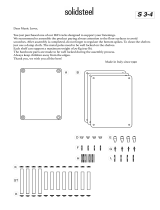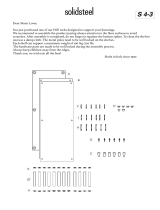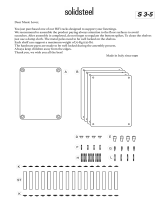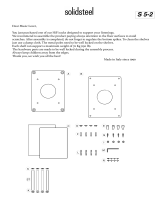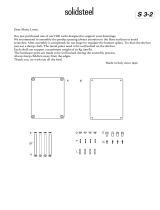IMPORTANT SAFETY INSTRUCTIONS
6
SAFETY PRECAUTIONS
• Do not use water on grease fires. Never pick up
a flaming pan. Turn the controls off. Smother a
flaming pan on a surface unit by covering the
pan completely with a well-fitting lid, cookie
sheet or flat tray. Use a multi-purpose dry
chemical or foam-type fire extinguisher.
Flaming grease outside a pan can be put out by
covering it with baking soda or, if available, by
using a multi-purpose dry chemical or foam-
type fire extinguisher.
Flame in the oven can be smothered
completely by closing the oven door and
turning the oven off or by using a multi-
purpose dry chemical or foam-type fire
extinguisher.
• DO NOT STORE OR USE COMBUSTIBLE
MATERIALS, GASOLINE OR OTHER
FLAMMABLE VAPORS AND LIQUIDS IN
THE VICINITY OF THIS OR ANY OTHER
APPLIANCE.
• Do not let cooking grease or other flammable
materials accumulate in or near the range.
Clean the drip tray after every use.
• If you smell gas, the installer has not done a
proper job of checking for leaks. You can have
a small leak and therefore a faint gas smell if
the connections are not completely tight.
Finding a gas leak is NOT a do-it-yourself
procedure. Some leaks can only be found with
the burner control in the ON position and for
your protection it must be done by a qualified
service technician. Never use an open flame to
locate a leak.
• If by some chance a burner goes out and gas
escapes, open a window or a door to let the
room air out. Do not attempt to use the
appliance until the gas has had time to
dissipate. Follow the instructions in What to do
if You Smell Gas.
• Do not use aluminum foil to line any part of the
oven or cooktop. Using a foil liner could result
in a fire hazard or the obstruction of the flow of
combustion and ventilation air. Foil is an
excellent heat insulator and heat will be
trapped underneath it. This trapped heat can
upset the cooking performance and can
damage the finish of the oven or the cooktop.
SURFACE COOKING
• Do not heat unopened food containers; a
build-up of pressure may cause the container
to burst.
• Set the burner control so that the flame heats
only the bottom of the pan and does not extend
beyond the bottom of the pan. Excessive flame
is hazardous. The high BTU burners can easily
melt cookware handles.
• Hold the handle of the pan, using a dry pot
holder, to prevent movement of the utensil
when stirring or turning food.
• Always heat fat slowly, and watch as it heats.
• Always use the LITE position when igniting the
surface burners and make sure the burners
have ignited, including the center simmer
flame.
• Do not let pot holders come near open flames
when lifting cookware. Do not use a towel or
other bulky cloth in place of a pot holder.
• Never leave the surface burners unattended at
high flame settings. Boilovers cause smoking
and greasy spillovers that may catch on fire. If
the burner flames are smothered by a severe
boilover which affects the ignitor, unburned
gas will escape into the room.
• To minimize the possibility of burns, ignition
of flammable materials and spillage, turn
cookware handles toward the side or back of
the range without extending over adjacent
burners.
• Never block the vents (air openings) of the
range. They provide the air inlet and outlet that
are necessary for the range to operate properly
with correct combustion. Air openings are
located at the top and bottom of the oven door,
drip tray, drip tray handle area, vent area, and
area immediately surrounding the top burners
(burner pans).




















